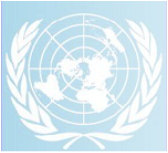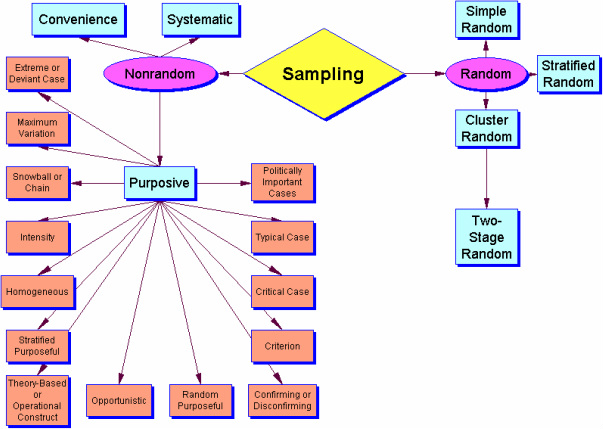ಜಾತ್ಯಾತೀತ್ ಭಾರತ್
ಇತ್ತೀಚಿಗೆ ಅಮೀರ್ ಖಾನ್ ದೇಶ್ ಬಿಟ್ಟು ಹೋಗುತ್ತೇನೆ ಎಂದಿದ್ದಕ್ಕೆ ಪ್ರೊ.ಚಂಪಾರವರು ಹೇಳಿದ್ದು
ಹೋಗಬೇಕಾದವರು ಬ್ರಾಹ್ಮಣರು ಏಕೆಂದರೆ ಅವರು ಅರ್ಯ್ರರು ಮತ್ತು ಮೂಲ ನಿವಾಸಿಗಳಾದ ದ್ರಾವಿಡರ ಹಣ,ಆಸ್ತಿ ಮತ್ತು ಸ್ವಾತ್ರಂತ್ರ ಕಸಿದವರು.
ಚಂಪಾರವರೆ ಮಹಾಮೇಧಾವಿ ಮ್ಯಾಕ್ಸಮುಲ್ಲರ್ ಮತ್ತು ಸರ್. ಮೋರಿಟಿಯರ್ ವ್ಹೀಲರ್ ಆವರ ಹಸಿಸುಳ್ಳುಗಳ ಸರಮಾಲೆ ಈ ಅರ್ಯ ಮತ್ತು ಅನಾರ್ಯ ಪದ್ದತಿ ದೇಶದ ಪ್ರಖ್ಯಾತ ಅರ್ಕಿಯಾಲೊಜಿಸ್ಟ್ ಡಾ. ಎಸ್.ಆರ್. ರಾವ್ ಇದನ್ನುಸುಳ್ಳೆಂದು ಸಾಬೀತು ಪಡಿಸಯಾಗಿದೆ. ಜಿ. ಎಫ್. ಡೆಲ್ಸ ಹೊಸದಾಗಿ ನಡಸಿದ ಉತ್ಖನನದಿಂದ ಆನಾರ್ಯರ ನರಸಂಹಾರ ಸುಳ್ಳೆಂದು ಸಾಬೀತಾಗಿದೆ.
ಬ್ರಾಹ್ಮಣರು ಹೊರಗಿನಿಂದ ಬಂದು ಇಲ್ಲಿ ಆಕ್ರಮಣ ನಡೆಸಿ ಬದುಕಿಲ್ಲ ಅವರ ಮೂಲ ಕೂಡ ಭಾರತವೇ, ಬ್ರಾಹ್ಮಣರಲ್ಲಿ ಆದಷ್ಟು ಬದಲಾವಣೆಗಳು ಉಳಿದ ಯಾವುದೇ ಮೇಲು ಜಾತಿಗಳಲ್ಲಿ ಆಗಿಲ್ಲ. ಸಾವಿರಾರು ಬ್ರಾಹ್ಮಣರು ಹಳೆಯ ಸಂಪ್ರದಾಯಗಳನ್ನು ಧಿಕ್ಕರಿಸಿ ಜಾತ್ಯಂತರ ವಿವಾಹವಾಗಿದ್ದಾರೆ. ಸಮಾಜಿಕ ಅಸಮಾನತೆಯ ವಿರುದ್ಧ ಹೋರಾಡಿದ್ದಾರೆ. ಇದಕ್ಕೆ ರವಿಬೆಳಗೆರೆಯವರ ಹಾಯ್ ಬೆಂಗಳೂರು ದಿನಾಂಕ :೧೯/೧೧/೨೦೧೫ ರಲ್ಲಿ ಸವಿಸ್ತಾರವಾಗಿ ಪ್ರಕಟವಾಗಿದೆ.
ಆರ್ಯ ಮತ್ತು ದ್ರಾವಿಡರು ಎಂಬ ಸುಳ್ಳು ಕಥೆ ಹೆಣೆದಿದ್ದ ಮ್ಯಾಕ್ಸ್ ಮುಲ್ಲರ್, ಇದರ ಪರಿಣಮ ಜರ್ಮನರ ಮೇಲಾಗಿ ೧೮೭೧ ರಲ್ಲಿ ಯುದ್ದ ನಡೆದು ಫ್ರಾನ್ಸ್ ಸೋಲಿಸಿದಾಗ ಕಕ್ಕಾಬಿಕ್ಕಿಯಾಗಿ ಆರ್ಯ "ಜನಾಂಗವಲ್ಲ ಭಾಷೆ" ಎಂದು ಬಡಬಡಿಸಿದ ಈ ಅರ್ಕಿಯಾಲೊಜಿಸ್ಟ್.
ಆರ್ಯ ಮತ್ತು ದ್ರಾವಿಡರು ಎಂದು ಹಸಿ ಸುಳ್ಳಿನ ಮೇಲೆ ಬದುಕಿದ್ದ ಮುಲ್ಲರ್ ಮೇಲೆ ತಿಳಿಯಬೇಕೆಂದರೆ " The life and Letters of Max Muller" ಓದಬೇಕು
ಆರ್ಯರ ಆಕ್ರಮಣ ಮತ್ತು ದ್ರಾವಿಡರ ಸ್ವಾತ್ರಂತ್ರಹರಣ ವಾದವನ್ನುಪ್ರೋ.ಚಂಪಾರವರು ಒಪ್ಪುವುದಾದರೆ ಭಾರತದಲ್ಲಿ ಎಷ್ಟೋ ಜಾತಿಗಳು ಆಕ್ರಮಣ ಶೀಲತೆಯೊಂದಿಗೆ ಸ್ಟಾಪಿತಗೊಂಡಿವೇ. ಹಾಗಾದರೆ ಆಕ್ರಮಣಶೀಲ ಬ್ರಾಹ್ಮಣರೊಂದಿಗೆ ಯಾವ ಯಾವ ಜಾತಿ ಬಾಂದವರನ್ನು ದೇಶದಿಂದ ಹೊರ ಹಾಕುವಿರಿ.
ಪ್ರಬುದ್ಫ ಲೇಖಕ ಡಾ. ಸಿದ್ಫ್ಡಲಿಂಗ ಪಟ್ಟನ ಶೆಟ್ಟಿಯವರು ಹೇಳಿದಂತೆ ಶಾಂತ ಸರೋವರದಲ್ಲಿ ಎಮ್ಮೆಗಳು ಕೆಸರಾಡುವ ರೀತಿ ಮತ್ತು ಶಾಂತ ಸಮಾಜದಲ್ಲಿ ಹುಳಿ ಹಿಂಡುವ ಕೆಲಸಗಳು ನಿಲ್ಲಬೇಕು.
ಬೇಕಾದವರು ಈ ದೇಶದಲ್ಲಿ ಇರಲಿ ಬೇಡವಾದವರು ತಮಗೆ ಬೇಕಾದಲ್ಲಿಹೋಗಲಿ. ಈ ಜಾತಿಯತೆ ಅಳಯಲಿ, ಕುವೆಂಪುರವರ " ವಿಶ್ವಮಾನವ ಸಂದೇಶ" ಬೆಳಗಲಿ"
ಪವನ ಹುದ್ದಾರ್
Comment,
ಇತ್ತೀಚಿಗೆ ಅಮೀರ್ ಖಾನ್ ದೇಶ್ ಬಿಟ್ಟು ಹೋಗುತ್ತೇನೆ ಎಂದಿದ್ದಕ್ಕೆ ಪ್ರೊ.ಚಂಪಾರವರು ಹೇಳಿದ್ದು
ಹೋಗಬೇಕಾದವರು ಬ್ರಾಹ್ಮಣರು ಏಕೆಂದರೆ ಅವರು ಅರ್ಯ್ರರು ಮತ್ತು ಮೂಲ ನಿವಾಸಿಗಳಾದ ದ್ರಾವಿಡರ ಹಣ,ಆಸ್ತಿ ಮತ್ತು ಸ್ವಾತ್ರಂತ್ರ ಕಸಿದವರು.
ಚಂಪಾರವರೆ ಮಹಾಮೇಧಾವಿ ಮ್ಯಾಕ್ಸಮುಲ್ಲರ್ ಮತ್ತು ಸರ್. ಮೋರಿಟಿಯರ್ ವ್ಹೀಲರ್ ಆವರ ಹಸಿಸುಳ್ಳುಗಳ ಸರಮಾಲೆ ಈ ಅರ್ಯ ಮತ್ತು ಅನಾರ್ಯ ಪದ್ದತಿ ದೇಶದ ಪ್ರಖ್ಯಾತ ಅರ್ಕಿಯಾಲೊಜಿಸ್ಟ್ ಡಾ. ಎಸ್.ಆರ್. ರಾವ್ ಇದನ್ನುಸುಳ್ಳೆಂದು ಸಾಬೀತು ಪಡಿಸಯಾಗಿದೆ. ಜಿ. ಎಫ್. ಡೆಲ್ಸ ಹೊಸದಾಗಿ ನಡಸಿದ ಉತ್ಖನನದಿಂದ ಆನಾರ್ಯರ ನರಸಂಹಾರ ಸುಳ್ಳೆಂದು ಸಾಬೀತಾಗಿದೆ.
ಬ್ರಾಹ್ಮಣರು ಹೊರಗಿನಿಂದ ಬಂದು ಇಲ್ಲಿ ಆಕ್ರಮಣ ನಡೆಸಿ ಬದುಕಿಲ್ಲ ಅವರ ಮೂಲ ಕೂಡ ಭಾರತವೇ, ಬ್ರಾಹ್ಮಣರಲ್ಲಿ ಆದಷ್ಟು ಬದಲಾವಣೆಗಳು ಉಳಿದ ಯಾವುದೇ ಮೇಲು ಜಾತಿಗಳಲ್ಲಿ ಆಗಿಲ್ಲ. ಸಾವಿರಾರು ಬ್ರಾಹ್ಮಣರು ಹಳೆಯ ಸಂಪ್ರದಾಯಗಳನ್ನು ಧಿಕ್ಕರಿಸಿ ಜಾತ್ಯಂತರ ವಿವಾಹವಾಗಿದ್ದಾರೆ. ಸಮಾಜಿಕ ಅಸಮಾನತೆಯ ವಿರುದ್ಧ ಹೋರಾಡಿದ್ದಾರೆ. ಇದಕ್ಕೆ ರವಿಬೆಳಗೆರೆಯವರ ಹಾಯ್ ಬೆಂಗಳೂರು ದಿನಾಂಕ :೧೯/೧೧/೨೦೧೫ ರಲ್ಲಿ ಸವಿಸ್ತಾರವಾಗಿ ಪ್ರಕಟವಾಗಿದೆ.
ಆರ್ಯ ಮತ್ತು ದ್ರಾವಿಡರು ಎಂಬ ಸುಳ್ಳು ಕಥೆ ಹೆಣೆದಿದ್ದ ಮ್ಯಾಕ್ಸ್ ಮುಲ್ಲರ್, ಇದರ ಪರಿಣಮ ಜರ್ಮನರ ಮೇಲಾಗಿ ೧೮೭೧ ರಲ್ಲಿ ಯುದ್ದ ನಡೆದು ಫ್ರಾನ್ಸ್ ಸೋಲಿಸಿದಾಗ ಕಕ್ಕಾಬಿಕ್ಕಿಯಾಗಿ ಆರ್ಯ "ಜನಾಂಗವಲ್ಲ ಭಾಷೆ" ಎಂದು ಬಡಬಡಿಸಿದ ಈ ಅರ್ಕಿಯಾಲೊಜಿಸ್ಟ್.
ಆರ್ಯ ಮತ್ತು ದ್ರಾವಿಡರು ಎಂದು ಹಸಿ ಸುಳ್ಳಿನ ಮೇಲೆ ಬದುಕಿದ್ದ ಮುಲ್ಲರ್ ಮೇಲೆ ತಿಳಿಯಬೇಕೆಂದರೆ " The life and Letters of Max Muller" ಓದಬೇಕು
ಆರ್ಯರ ಆಕ್ರಮಣ ಮತ್ತು ದ್ರಾವಿಡರ ಸ್ವಾತ್ರಂತ್ರಹರಣ ವಾದವನ್ನುಪ್ರೋ.ಚಂಪಾರವರು ಒಪ್ಪುವುದಾದರೆ ಭಾರತದಲ್ಲಿ ಎಷ್ಟೋ ಜಾತಿಗಳು ಆಕ್ರಮಣ ಶೀಲತೆಯೊಂದಿಗೆ ಸ್ಟಾಪಿತಗೊಂಡಿವೇ. ಹಾಗಾದರೆ ಆಕ್ರಮಣಶೀಲ ಬ್ರಾಹ್ಮಣರೊಂದಿಗೆ ಯಾವ ಯಾವ ಜಾತಿ ಬಾಂದವರನ್ನು ದೇಶದಿಂದ ಹೊರ ಹಾಕುವಿರಿ.
ಪ್ರಬುದ್ಫ ಲೇಖಕ ಡಾ. ಸಿದ್ಫ್ಡಲಿಂಗ ಪಟ್ಟನ ಶೆಟ್ಟಿಯವರು ಹೇಳಿದಂತೆ ಶಾಂತ ಸರೋವರದಲ್ಲಿ ಎಮ್ಮೆಗಳು ಕೆಸರಾಡುವ ರೀತಿ ಮತ್ತು ಶಾಂತ ಸಮಾಜದಲ್ಲಿ ಹುಳಿ ಹಿಂಡುವ ಕೆಲಸಗಳು ನಿಲ್ಲಬೇಕು.
ಬೇಕಾದವರು ಈ ದೇಶದಲ್ಲಿ ಇರಲಿ ಬೇಡವಾದವರು ತಮಗೆ ಬೇಕಾದಲ್ಲಿಹೋಗಲಿ. ಈ ಜಾತಿಯತೆ ಅಳಯಲಿ, ಕುವೆಂಪುರವರ " ವಿಶ್ವಮಾನವ ಸಂದೇಶ" ಬೆಳಗಲಿ"
ಪವನ ಹುದ್ದಾರ್
Comment,



 RSS Feed
RSS Feed